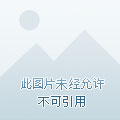China-Singapore Jingwei March 28 Title: From January to February, China's automobile exports increased by 70% year-on-year
Author Cui Dongshu Secretary-General of the National Passenger Car Market Information Joint Association
Since 2021, with the in-depth impact of the epidemic on all aspects of the global economy, the resilience advantages of China's automotive industry chain have been fully reflected, and China's auto export market has shown a super growth trend in the past two years. According to data from the General Administration of Customs, in 2021, the export sales volume of China's automobile market was 2.138 million units, an increase of 102% year-on-year. From January to February 2022, the export sales volume of China's automobile market was 480,000 units, a sharp increase of 70% year-on-year.
At present, China's automobile exports to the market of developed countries in Europe have made great breakthroughs. New energy vehicles are the core growth points of China's automobile exports, which has changed the passive situation of China's automobile exports relying on underdeveloped countries such as Asia and Africa for a long time.
Specifically, in 2020, China exported 223,000 new energy vehicles, performing well; in 2021, the value reached 588,000 units, and the export performance continued to strengthen; from January to February 2022, China exported a total of 165,000 new energy vehicles, continuing to maintain a good situation of strong growth of new energy vehicles.

Source: General Administration of Customs, compiled by the author
From 2013 to 2015, under the background of the continuous downturn in global economic performance, the growth rate of China's automobile exports from 2016 to 2020 maintained a gradual stabilization and improvement trend. At present, China's monthly automobile export volume remains at a level of about 100,000-150,000 units.
According to the data, in the whole of 2020, China's automobile export sales reached 1.059 million units, down 13.1% year-on-year. In 2021, under the impact of the epidemic, China's export sales of automobiles increased by 102% against the trend, reaching 2.138 million units. In 2022, China's automobile exports made a good start, and from January to February, the export volume of automobiles reached 483,000 units, an increase of 70% year-on-year, and such a high growth rate is rare in the history of the industry.
Judging from the monthly trend, in recent years, China's automobile exports still show seasonal characteristics, that is, they are manifested as the characteristics of "summer began to rise, and then the roller coaster peaked and fell". However, in 2021, the industry as a whole shows an explosive trend, and the trend of China's automobile exports has also changed significantly, that is, it is manifested as a sustained upward trend.
The reason is that I think that under the continuous impact of the epidemic and the frequent problems in the global overseas supply chain, the Chinese automotive industry has taken this rare opportunity to continue to develop, and finally manifested itself in the continuous strengthening of exports. All this shows that the global competitiveness of China's auto industry is greatly improving.
At present, China's new energy vehicles are mainly exported to the United Kingdom, Australia, Belgium and other countries, which has become a major highlight of China's automobile exports. From January to February 2022, China exported a total of 165,000 new energy vehicles, similar to China's overall automobile exports, and the export performance of new energy vehicles continued to strengthen. Among them, the new energy penetration rate of foreign passenger cars accounts for about 40%, which is much higher than the domestic level. (Zhongxin Jingwei APP)
This article is selected and edited by The Sino-Singapore Jingwei Research Institute, and the works produced by the selection are copyrighted by Xinjingwei, and shall not be reproduced, excerpted or otherwise used by any unit or individual without written authorization. The views involved in the selected content only represent the original author and do not represent the views of China-Singapore Jingwei.
Editor-in-Charge: Lee Wai-chung